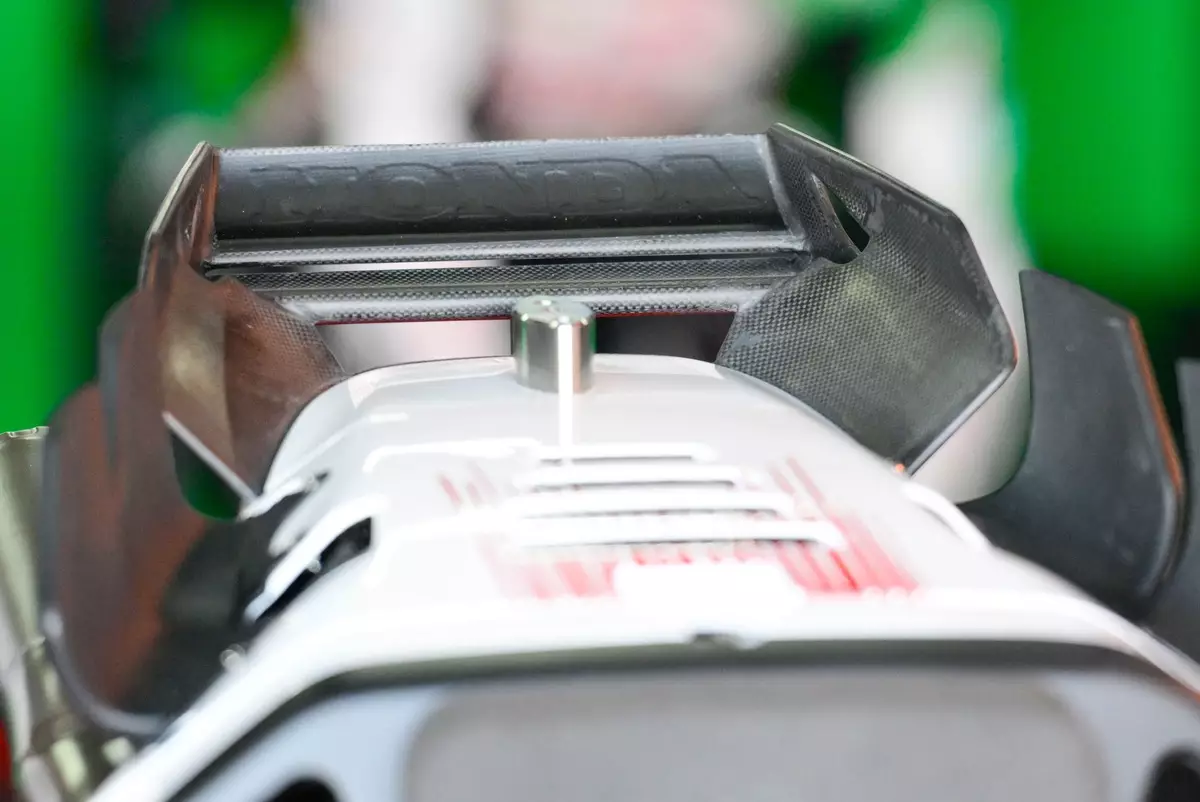The world of MotoGP is ever-evolving, with teams constantly striving for innovation and performance enhancements. Honda, a longstanding dominator in the sport, has found itself in the challenging position of seeking significant upgrades for its beleaguered RC213V bike. In recent testing at Buriram, Thailand, the company demonstrated its commitment to regaining a competitive edge by introducing advanced aerodynamic features that could redefine their racing strategy for the coming season.
Honda’s MotoGP campaign has faced considerable challenges in recent seasons, with performance gaps widening between them and rivals, particularly Ducati. The testing sessions at Buriram were pivotal for Honda, offering vital insights into areas where improvements could be made not only in engine performance but also in aerodynamics. The introduction of an evolved rear section on Johann Zarco’s Castrol-sponsored bike represents a broader push to refine and enhance the overall design, a clear indication of Honda’s dedication to innovation.
What stands out in Honda’s latest developments is the introduction of new aerodynamic components, including wings and a rear spoiler. The design strategy involves complex alterations to airflow dynamics, showcasing Honda’s engineering prowess. The newly implemented vertical flaps are strategically designed to work together to optimize air movement, creating a more efficient airflow that enhances rear wing functionality. This is a significant improvement, as efficient airflow is crucial for maintaining high-speed stability and achieving optimal downforce—vital elements for competitive racing.
A compelling aspect of Honda’s innovation is the structural revisions to the rear wing assembly. Previously, the cantilevered upper profile, dubbed the ‘flap tower,’ was part of the design but has since been discarded. This decision stems from a desire to enhance the overall performance of the tail section rather than complicate it. By simplifying the design and bending the lateral bulkheads inward, Honda aims to streamline airflow, redirecting it towards the tail of the bike and consequently improving aerodynamic efficiency.
During the initial testing phases in Malaysia, Honda’s engineers identified a troubling 7 km/h speed deficit relative to their competitors, particularly Ducati. This gap underscores the pressing need for innovative solutions in engine performance alongside their newly refined aerodynamic designs. Honda’s engineers are not only aware of the limitations of the current engine power but are also keenly focused on uncovering further performance enhancements beyond the engine itself.
The collaborative effort to explore new components and strategies didn’t rest solely on Zarco’s shoulders. Other riders from Honda’s lineup have also participated in testing, providing a wealth of data crucial for informed decision-making moving forward. For instance, Luca Marini’s solid sixth-place finish alongside Zarco’s seventh indicates that the team is beginning to find a new rhythm, albeit with reservations about the overall effectiveness of their progress.
In post-testing interviews, Zarco expressed a mix of satisfaction and caution regarding the bike’s performance. He highlighted the bike’s improved capabilities on fresh tyres, suggesting some advancements have been made. However, he also pointed out the difficulties in maintaining consistent pace—an inherent challenge given the differing characteristics of the Buriram track compared to Malaysia.
“I’m so satisfied with this last half an hour when I put a new tyre on and the things were working. I know I can be fast, so it’s good to confirm it,” he stated. Yet, he emphasized the ongoing quest for substantial improvements that would truly prepare Honda to compete with the frontrunners in MotoGP. This balance between optimism and the acknowledgment of limitations is crucial for Honda as it forges ahead into the new season.
The road to recovery for Honda in MotoGP is undeniably steep, with fierce competitors not only enforced by technical excellence but also by the muscle of consistent performance out on the track. The innovations introduced during the Buriram test signify a vital step, yet they are but part of a broader transformation effort.
Honda’s commitment to experimenting with multiple design features, gathering rider feedback, and analyzing competitive gaps showcases a proactive approach to change. As the brand progresses through the season, the emphasis will remain on refining these technologies and harnessing the full potential of their engineering efforts.
Ultimately, Honda’s journey towards reclaiming its stature in MotoGP is a multifaceted endeavor, merging cutting-edge technology with the art of racing prowess—a thrilling saga that MotoGP fans will eagerly follow as the season unfolds.


Leave a Reply